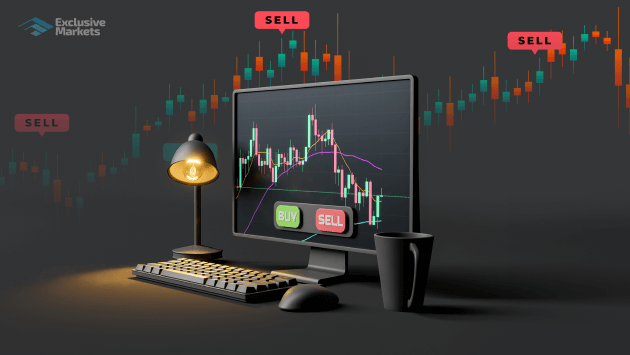
Forex exchange trading, often referred to simply as Forex trading, has gained immense popularity in today’s financial market. It is a decentralized global market for trading currencies and involves buying one currency while simultaneously selling another. To dive deeper into this fascinating world, be sure to check out forex exchange trading trading-terminal.com for resources and insights.
What is Forex Trading?
Forex trading can be defined as the process of exchanging one currency for another in the hopes of making a profit. The Forex market operates 24 hours a day, five days a week, and is the largest financial market in the world, with a daily trading volume exceeding $6 trillion. This market is not limited to banks and institutional investors; individual traders can also participate, thanks to the advancements in technology and online trading platforms.
Understanding Currency Pairs
In Forex trading, currencies are traded in pairs, such as EUR/USD, GBP/USD, and USD/JPY. In these pairs, the first currency is known as the base currency, while the second is the quote currency. When trading currency pairs, traders speculate on the price movement of one currency relative to another. For example, if a trader believes that the Euro will strengthen against the US Dollar, they would buy the EUR/USD pair. Conversely, if they believe the Euro will weaken, they would sell this pair.
Types of Forex Analysis
Successful Forex trading largely depends on analysis of market trends and price movements. There are three primary types of analysis used by Forex traders:
- Fundamental Analysis: This involves analyzing economic indicators, interest rates, and geopolitical events that can influence currency movements. Traders who use fundamental analysis often look at news releases, economic reports, and financial statements.
- Technical Analysis: This method focuses on statistical trends gathered from trading activity, such as price movements and trading volume. Technical traders utilize various chart patterns, indicators, and oscillators to determine potential future price actions.
- Sentiment Analysis: This approach seeks to gauge the overall mood of the market. Traders analyze positioning data, news sentiment, and other factors to determine whether the market is overly bullish or bearish, potentially leading to reversals.

Popular Trading Strategies
Forex traders employ various strategies based on their analysis and trading goals. Here are a few popular strategies:
- Day Trading: Day traders buy and sell currencies within the same trading day, aiming to capitalize on short-term price movements. This strategy requires constant monitoring and quick decision-making.
- Swing Trading: Swing traders hold positions for several days to weeks to benefit from price “swings.” This strategy requires less constant monitoring than day trading and can be effective for capturing larger market moves.
- Scalping: Scalpers make numerous trades throughout the day, seeking to profit from small price changes. This high-frequency trading requires a significant time commitment and quick execution.
- Position Trading: Position traders take a long-term approach, holding trades for weeks, months, or even years. This strategy is based on fundamental analysis and typically involves fewer transactions.
Risk Management in Forex Trading
Risk management is crucial in Forex trading to protect capital and minimize losses. Effective strategies include:
- Setting Stop-Loss Orders: A stop-loss order automatically closes a trade at a predetermined price, limiting potential losses.
- Using Proper Position Sizing: Traders should size their positions based on their account balance and risk tolerance, ensuring that no single trade can significantly impact their overall capital.
- Diversifying Trades: By not putting all funds into one trade or currency pair, traders can spread their risk across different positions.
Choosing a Forex Broker
Selecting the right Forex broker is a critical step for any trader. Important factors to consider include:
- Regulation: Ensure the broker is regulated by a reputable authority, providing a layer of security for your funds.
- Trading Platform: Evaluate the trading platform’s features and usability. A good platform should provide various analytical tools, charting capabilities, and fast execution speeds.
- Spreads and Commissions: Different brokers offer various spreads and commission structures. Compare these costs to find the most cost-effective option for your trading style.
- Customer Service: Efficient customer service can make a significant difference, especially for new traders who may require assistance.
Forex Trading Tools and Resources
A variety of tools and resources are available to help traders improve their skills and make informed decisions. These include:
- Economic Calendars: These calendars provide information on upcoming economic events, highlighting those likely to impact currency markets.
- Trading Signals: Many platforms offer trading signals based on technical and fundamental analysis, guiding traders on potential entry and exit points.
- Forex News Websites: Staying informed about market developments and news can significantly influence trading decisions.
Conclusion
Forex exchange trading provides ample opportunities for individuals to engage in the global financial markets. By understanding currency pairs, employing effective trading strategies, practicing sound risk management, and utilizing the right tools, traders can increase their chances of success. As with any form of trading, continuous education, practice, and discipline are essential to navigate the complexities of Forex trading effectively. Always remain updated on market trends and news, and continuously refine your trading approach to adapt to the ever-changing landscape of the Forex market.

Recent Comments